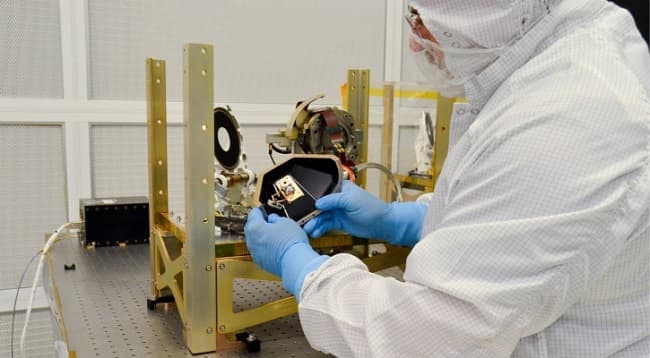NASA's new laser system boosts internet up to 1Gbps in space
Everything in space seems fast, then why should internet speed suffer? Currently, RF (radio Frequency) system is used for space communication and it has been in use since 1950s. It’s high time to evolve and NASA is already working hard on a technological demonstration using Laser to bring high-speed internet in space. Laser Communications Relay Demonstration (LCRD) is the name given to this revolutionary step taken to strengthen the connection between space and Earth.

Guess what? We don’t even have to wait that long to see this technology at work. According to NASA officials, the first prototype will be launched in summer of 2019. Following the successful prototype demonstration, first LCRD system will be installed on the International Space Station (ISS) in a time span of 2 years.
![[IMG]](proxy.php?image=https%3A%2F%2Fi.gadgets360cdn.com%2Flarge%2Flaser-communications-conceptual-animation_1490268674428.gif&hash=4240eb14da0b05a7047ae2038930e501)
So, if everything goes according to the plan, astronauts will be able to enjoy live streaming without buffering within 5 years. For the development phase of these 3 years, NASA has built two ground-based laser terminals in California and Hawaii for testing and improving upon the technology.
Not just that, using data encoded over Laser beams for space transfers can theoretically provide 10 to 100 times better data rates than radio-frequency communication system. Even the equipment used for LCRD system are much smaller and weigh comparatively lesser than RF system.
So, it’s a win-win situation and this is not even the first time, Lunar Laser Communications Demonstration (LLCD) demonstrated its utility in low-Earth orbit situations in 2013 by achieving transfer speed of up to 622 Mbps. The new project is going to test the LCRD system’s reliability in long range operations and is aimed at getting Gigabit speeds in space.
Source: #-Link-Snipped-#

Guess what? We don’t even have to wait that long to see this technology at work. According to NASA officials, the first prototype will be launched in summer of 2019. Following the successful prototype demonstration, first LCRD system will be installed on the International Space Station (ISS) in a time span of 2 years.
![[IMG]](proxy.php?image=https%3A%2F%2Fi.gadgets360cdn.com%2Flarge%2Flaser-communications-conceptual-animation_1490268674428.gif&hash=4240eb14da0b05a7047ae2038930e501)
So, if everything goes according to the plan, astronauts will be able to enjoy live streaming without buffering within 5 years. For the development phase of these 3 years, NASA has built two ground-based laser terminals in California and Hawaii for testing and improving upon the technology.
Not just that, using data encoded over Laser beams for space transfers can theoretically provide 10 to 100 times better data rates than radio-frequency communication system. Even the equipment used for LCRD system are much smaller and weigh comparatively lesser than RF system.
So, it’s a win-win situation and this is not even the first time, Lunar Laser Communications Demonstration (LLCD) demonstrated its utility in low-Earth orbit situations in 2013 by achieving transfer speed of up to 622 Mbps. The new project is going to test the LCRD system’s reliability in long range operations and is aimed at getting Gigabit speeds in space.
Source: #-Link-Snipped-#
0
